
Ilocos Norte: A Gem of Northern Philippines
Discover Ilocos Norte: A blend of natural wonders, historical treasures, and culinary delights in Northern Philippines.
Ilocos Norte is a province in the northern part of the Philippines known for its stunning landscapes, rich history, and vibrant culture. It offers a mix of natural wonders and historical sites that draw tourists from all over the world. From pristine beaches to centuries-old churches, the province is a treasure trove of unique experiences. The capital city, Laoag, serves as a gateway to the province's many attractions. Here, you can visit the Sinking Bell Tower, which has been gradually sinking into the ground since its construction. Nearby, the La Paz Sand Dunes offer a unique adventure with thrilling 4x4 rides and sandboarding. A short drive away is the town of Paoay, home to the UNESCO World Heritage-listed Paoay Church, an architectural marvel with its Baroque design. For those who love the beach, Pagudpud is a must-visit. Known for its white sand beaches and clear blue waters, it is often referred to as the 'Boracay of the North.' The iconic Bangui Windmills, the first power-generating windmill farm in Southeast Asia, provide a picturesque backdrop to this coastal paradise. Further inland, the Kapurpurawan Rock Formation and the Patapat Viaduct offer stunning views and perfect photo opportunities. Ilocos Norte is also a culinary destination. The local cuisine is both flavorful and unique, featuring dishes like 'bagnet' (crispy pork belly), 'empanada' (stuffed pastry), and 'pinakbet' (vegetable stew). The province's rich cultural heritage is showcased in its festivals, such as the Pamulinawen Festival in Laoag and the Guling-Guling Festival in Paoay, where visitors can experience traditional music, dance, and crafts.
Local tips in Ilocos Norte
- Visit early in the morning to avoid the heat, especially during the dry season from November to April.
- Try the local delicacies at the Laoag City Public Market for an authentic culinary experience.
- Rent a 4x4 vehicle for the La Paz Sand Dunes to make the most of your adventure.
- Bring cash as some remote areas and smaller establishments may not accept credit cards.
- Wear comfortable shoes suitable for walking, especially when exploring historical sites and natural attractions.
Neighbourhoods in Ilocos Norte
Ilocos Norte: A Gem of Northern Philippines
Ilocos Norte is a province in the northern part of the Philippines known for its stunning landscapes, rich history, and vibrant culture. It offers a mix of natural wonders and historical sites that draw tourists from all over the world. From pristine beaches to centuries-old churches, the province is a treasure trove of unique experiences. The capital city, Laoag, serves as a gateway to the province's many attractions. Here, you can visit the Sinking Bell Tower, which has been gradually sinking into the ground since its construction. Nearby, the La Paz Sand Dunes offer a unique adventure with thrilling 4x4 rides and sandboarding. A short drive away is the town of Paoay, home to the UNESCO World Heritage-listed Paoay Church, an architectural marvel with its Baroque design. For those who love the beach, Pagudpud is a must-visit. Known for its white sand beaches and clear blue waters, it is often referred to as the 'Boracay of the North.' The iconic Bangui Windmills, the first power-generating windmill farm in Southeast Asia, provide a picturesque backdrop to this coastal paradise. Further inland, the Kapurpurawan Rock Formation and the Patapat Viaduct offer stunning views and perfect photo opportunities. Ilocos Norte is also a culinary destination. The local cuisine is both flavorful and unique, featuring dishes like 'bagnet' (crispy pork belly), 'empanada' (stuffed pastry), and 'pinakbet' (vegetable stew). The province's rich cultural heritage is showcased in its festivals, such as the Pamulinawen Festival in Laoag and the Guling-Guling Festival in Paoay, where visitors can experience traditional music, dance, and crafts.
When is the best time to go to Ilocos Norte?
Iconic landmarks you can’t miss
Bangui Windmills
Experience the stunning Bangui Windmills in Ilocos Norte, where modern engineering meets breathtaking coastal beauty for an unforgettable adventure.

San Agustin Church of Paoay
Explore the rich history and stunning architecture of San Agustin Church, a UNESCO World Heritage Site in Paoay, Ilocos Norte.

Malacañang of the North
Explore Malacañang of the North, a captivating museum by Paoay Lake, rich in history and stunning architecture, ideal for culture enthusiasts and nature lovers alike.

Kapurpurawan Rock Formation
Explore the captivating Kapurpurawan Rock Formation in Burgos, Ilocos Norte, a stunning natural wonder that showcases nature's artistry and breathtaking coastal views.

Cape Bojeador Lighthouse
Discover the stunning Cape Bojeador Lighthouse in Burgos, Ilocos Norte, a historical landmark offering breathtaking coastal views and rich maritime heritage.

Paoay Sand Dunes Adventures (Suba)
Experience the thrill of adventure and natural beauty at Paoay Sand Dunes, a unique tourist attraction in Ilocos Norte offering sandboarding and stunning views.
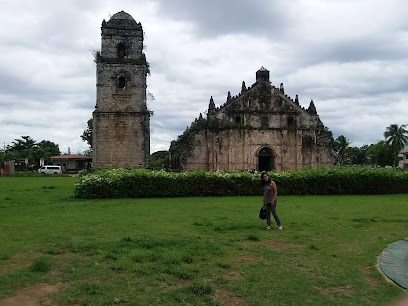
Patapat Viaduct
Discover the stunning Patapat Viaduct in Pagudpud, Ilocos Norte, where breathtaking views meet architectural beauty along the Philippine coastline.

Sinking Bell Tower
Explore the captivating Sinking Bell Tower in Laoag City, a historical landmark that embodies the rich culture and history of Ilocos Norte.

Aurora Park
Explore the lush landscapes and serene lakes of Aurora Park in Laoag City, a perfect getaway for nature lovers and families.
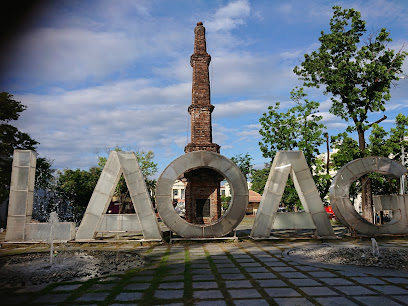
Santa Monica Parish Church (Sarrat Church)
Discover the architectural beauty and rich history of Santa Monica Parish Church in Sarrat, Ilocos Norte, a must-visit for cultural enthusiasts and travelers alike.

Saint William’s Cathedral (Diocese of Laoag)
Discover the historical and architectural splendor of Saint William’s Cathedral in Laoag City, a serene destination rich in cultural heritage.

Museo Ilocos Norte
Explore the rich history and vibrant culture of Ilocos Norte at Museo Ilocos Norte, a must-visit for every traveler.

Ilocos Norte Provincial Capitol
Explore the architectural beauty and rich history of the Ilocos Norte Provincial Capitol in Laoag City, a cultural gem of the Philippines.

Batanes of the North
Explore the tranquil beauty and rich cultural heritage of Batanes of the North in Pagudpud, Ilocos Norte, a paradise for every traveler.

Agua Grande
Experience the natural beauty and tranquility of Agua Grande, a stunning park in Pagudpud, Ilocos Norte, perfect for relaxation and exploration.

Unmissable attractions to see
Bangui Windmills
Experience the stunning Bangui Windmills in Ilocos Norte, a breathtaking blend of natural beauty and renewable energy that captivates every visitor.

San Agustin Church of Paoay
Experience the rich history and stunning architecture of the San Agustin Church, a UNESCO World Heritage site in Paoay, Ilocos Norte.

San Agustin Church of Paoay
Explore the breathtaking San Agustin Church of Paoay, a UNESCO World Heritage Site known for its stunning Baroque architecture and rich historical significance.

Malacañang of the North
Discover the rich heritage of the Philippines at Malacañang of the North, an iconic museum overlooking the serene Paoay Lake.

Kapurpurawan Rock Formation
Explore the enchanting Kapurpurawan Rock Formation in Burgos, Ilocos Norte, where nature's artistry meets breathtaking coastal views.

Kapurpurawan Rock Formation
Explore the Kapurpurawan Rock Formation: A natural wonder in Burgos, Ilocos Norte, showcasing stunning limestone cliffs against the backdrop of the West Philippine Sea.

Cape Bojeador Lighthouse
Explore the historical Cape Bojeador Lighthouse in Burgos, Ilocos Norte, where stunning views and rich maritime history meet.

Paoay Sand Dunes Adventures (Suba)
Experience the adventure of a lifetime at Paoay Sand Dunes, where thrilling sandboarding and breathtaking views await every traveler.

Patapat Viaduct
Discover the breathtaking beauty of Patapat Viaduct in Pagudpud, Ilocos Norte - an engineering marvel with stunning coastal views.
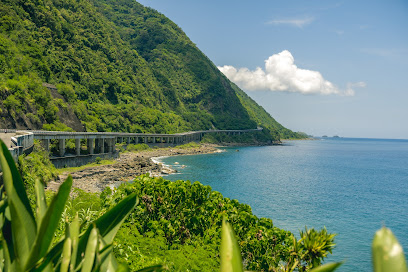
Bantay Abot Cave
Discover the breathtaking beauty of Bantay Abot Cave, a stunning natural attraction in Pagudpud, Ilocos Norte, perfect for nature lovers and adventure seekers alike.

Saud Beach
Discover the breathtaking beauty of Saud Beach in Pagudpud, Ilocos Norte, where pristine sands meet azure waters and vibrant local culture awaits.

Sinking Bell Tower
Explore the historic Sinking Bell Tower in Laoag City, a unique landmark embodying the rich heritage and culture of Ilocos Norte.

Sinking Bell Tower
Discover the captivating Sinking Bell Tower in Laoag, a historical landmark that tells the rich stories of Ilocos Norte's past.

Ilocos Sand Dunes
Experience the thrill of adventure and the beauty of nature at Ilocos Sand Dunes, a premier destination for tourists in the Philippines.

Ferdinand E. Marcos Presidential Center
Discover the rich history of the Philippines at the Ferdinand E. Marcos Presidential Center, a museum showcasing the life of former President Marcos.

Essential places to dine
La Preciosa Ilocos Corp
Experience the authentic taste of Ilocano cuisine at La Preciosa Ilocos Corp in Laoag City—where every dish tells a story.

Kamalig Garden Grill & Restaurant
Experience the best of Filipino cuisine surrounded by nature at Kamalig Garden Grill & Restaurant in Laoag City.

BergBlick Restaurant
Experience the perfect blend of Filipino hospitality and German culinary traditions at BergBlick Restaurant in beautiful Pagudpud.

Cuisine de Iloco Restaurant
Experience the rich flavors of Filipino cuisine at Cuisine de Iloco in Laoag City, where tradition meets taste in every delightful dish.

Chicken Ati-Atihan
Discover authentic Filipino cuisine at Chicken Ati-Atihan in Laoag City – where tradition meets flavor!

Bellagio Hills Hotel and Restaurant
Discover tranquility at Bellagio Hills Hotel & Restaurant in Paoay - where comfort meets exquisite dining amidst stunning landscapes.

Eagles' Nest Bar and Restaurant
Discover the flavors of Filipino cuisine at Eagles' Nest Bar and Restaurant in Laoag City – where every dish tells a story.
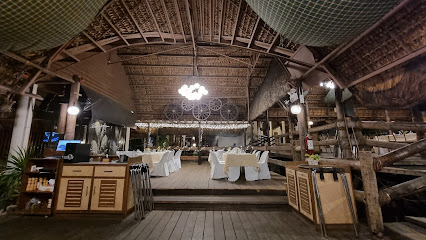
Smoke Bar and Restaurant
Experience exquisite Cajun and Italian cuisine at Smoke Bar and Restaurant in Paoay – where every meal is a flavorful adventure.

MACY'S DINER
Discover delicious local cuisine at Macy's Diner in Laoag City - a must-visit culinary gem in Ilocos Norte.

AJ SEA FOOD HAUZ
Experience fresh seafood delights at AJ Sea Food Hauz in Laoag City - a culinary haven for seafood enthusiasts.

Jade Karla Restaurant
Experience the perfect blend of Filipino and Chinese cuisine at Jade Karla Restaurant in Laoag City - a must-visit culinary destination.

PLANAXIS Grill and Restaurant
Experience exquisite dining at PLANAXIS Grill and Restaurant in Bacarra - where every meal is a celebration of local flavors.

Ladrillos Restaurant
Experience authentic Ilocano cuisine at Ladrillos Restaurant - where every meal is a celebration of local flavors and warm hospitality.

Vis-a-vis Lounge Laoag
Discover the rich flavors of Ilocos Norte at Vis-a-vis Lounge, where traditional meets contemporary dining in Laoag City.

White Rocks Resto Grill
Discover authentic Filipino flavors at White Rocks Resto Grill in Burgos, Ilocos Norte – where every meal is complemented by stunning coastal views.
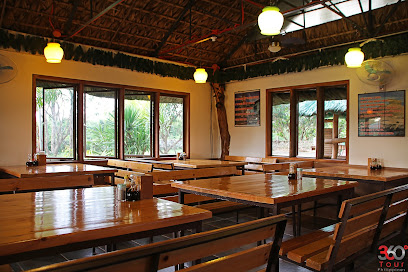
Markets, malls and hidden boutiques
Robinsons Department Store Ilocos
Explore a vibrant shopping haven at Robinsons Department Store Ilocos, where local culture meets modern retail in a delightful experience.

Mart One Department Store Laoag
Experience the vibrant shopping atmosphere of Mart One Department Store in Laoag, where local culture and modern retail meet.

oneo5ive
Explore oneo5ive in Laoag City for a unique shopping experience filled with trendy apparel and local fashion treasures.

105 Department Store
Explore the vibrant shopping scene at 105 Department Store in Laoag City, where local charm meets modern retail in a delightful experience.
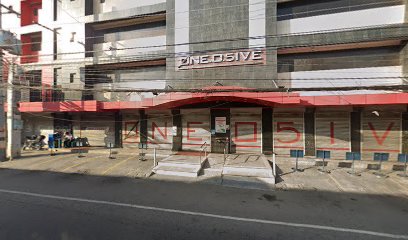
UNIQLO Robinsons Ilocos
Explore the latest in fashion at UNIQLO Robinsons Ilocos, where style meets comfort in the heart of Laoag City.

Calingangan Store
Discover local treasures at Calingangan Store in Sarrat, Ilocos Norte - a charming shopping destination showcasing unique crafts and delicacies.

Angel lyka Store
Explore the charm of Ilocos Norte at Angel Lyka Store, your go-to destination for unique local products and heartfelt souvenirs.

Muramu Fashion
Explore the vibrant local fashion scene at Muramu Fashion in Laoag City, where style meets tradition in a delightful shopping experience.

Tourist Souvenir Shops
Explore the vibrant Tourist Souvenir Shops of Pagudpud for unique crafts and local treasures that embody the spirit of Ilocos Norte.

Ditoy Ilocos
Discover authentic craftsmanship and unique souvenirs at Ditoy Ilocos, a charming store in Paoay, Ilocos Norte.

Mini M Store
Explore the heart of Laoag City at Mini M Store, your go-to destination for authentic local products and a taste of Ilocano culture.

Josephine Store
Explore Josephine Store in Solsona, Ilocos Norte, for unique home goods and local crafts that embody the vibrant culture of the Philippines.

Samsam sari-sari store
Explore the heart of Laoag City at Samsam Sari-Sari Store, where local culture and convenience meet in a vibrant community setting.

Penshoppe
Explore Penshoppe in San Nicolas, Ilocos Norte, for trendy styles and quality apparel that suit every fashion enthusiast's taste.

Herziel Store
Discover authentic local crafts and souvenirs at Herziel Store, a charming shopping destination in Laoag City, Ilocos Norte, Philippines.

Essential bars & hidden hideouts
Smoke Bar and Restaurant
Discover the flavors of Cajun and Italian cuisine at Smoke Bar and Restaurant, a must-visit dining spot in Paoay, Ilocos Norte.
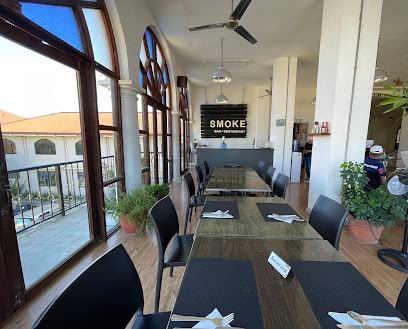
COCKHOUSE BAR
Experience the vibrant nightlife at Cockhouse Bar in Laoag City, where great drinks and a friendly atmosphere await.

Gen. Luna Bar & Grill
Experience the vibrant flavors of Laoag City at Gen. Luna Bar & Grill, where grilled specialties meet a lively atmosphere.
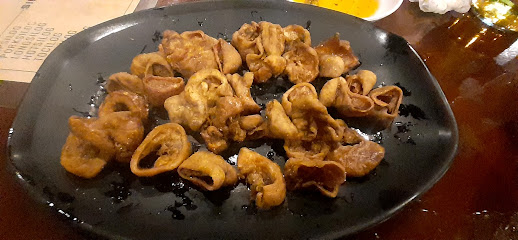
Coco Bar & Grill
Discover the lively Coco Bar & Grill in Pagudpud, where local flavors meet a stunning coastal atmosphere for an unforgettable dining experience.

Tapsilog Avenue Bar
Explore the vibrant flavors of Filipino cuisine at Tapsilog Avenue Bar, a lively hotspot in Laoag City perfect for relaxation and socializing.

Mansu Bar & Chill
Mansu Bar & Chill: Your go-to destination for cocktails and nightlife in Laoag City, Ilocos Norte.

Sooty's New Road
Experience the lively atmosphere and vibrant nightlife at Sooty's New Road, the perfect bar for tourists in Laoag City, Ilocos Norte.

Overtime Grill Resto Bar
Experience the vibrant atmosphere and local flavors at Overtime Grill Resto Bar in Bacarra, Ilocos Norte.

HEBROS
Discover the vibrant nightlife at HEBROS, a lively bar in Laoag City offering an extensive drink menu and a welcoming atmosphere.

Bottle Ground Tavern
Bottle Ground Tavern: A lively grill and bar experience in Laoag City, where delicious food meets vibrant nightlife in the heart of Ilocos Norte.

smoke point grill and restobar
Discover the flavors of Laoag City at Smoke Point Grill and Restobar, where delicious grilled dishes meet a vibrant bar atmosphere.
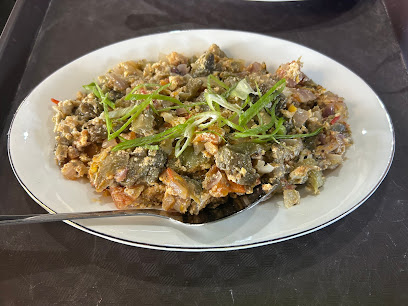
Bartech bar
Experience the vibrant nightlife of Laoag City at Bartech Bar, where great drinks and lively entertainment await every visitor.

Rico’s Bar and Cocktail Lounge
Experience the vibrant nightlife at Rico’s Bar and Cocktail Lounge, Pasuquin's top destination for creative cocktails and lively entertainment.
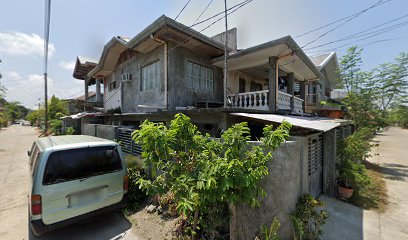
Chilluxe Resto Bar
Chilluxe Resto Bar in Laoag City offers a perfect blend of relaxation and local flavor, ideal for unwinding after a day of exploring Ilocos Norte.
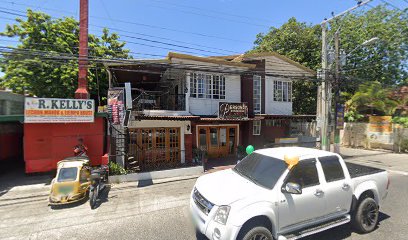
Vinny
Discover the vibrant nightlife of Laoag City at Vinny, a lively bar serving local drinks and creating unforgettable experiences in a welcoming atmosphere.

Local Phrases
-
- HelloNaimbag nga rabii
[Nai-mbag nga ra-bi] - GoodbyeNaimbag nga aldaw
[Nai-mbag nga al-daw] - YesOo
[O-o] - NoSaan
[Sa-an] - Please/You're welcomeAgyamanak
[Ag-ya-ma-nak] - Thank youAgyamanak
[Ag-ya-ma-nak] - Excuse me/SorryPasensya
[Pa-sen-sya] - How are you?Kumusta ka?
[Ku-mus-ta ka?] - Fine. And you?Naimbag met. Ken kano?
[Nai-mbag met. Ken ka-no?] - Do you speak English?Agsao ka ti Ingles?
[Ag-sa-o ka ti Ing-les?] - I don't understandSaanko ammo
[Sa-an-ko am-mo]
- HelloNaimbag nga rabii
-
- I'd like to see the menu, pleaseAwanak nga makita ti menu, agyamanak
[A-wa-nak nga ma-ki-ta ti me-nu, ag-ya-ma-nak] - I don't eat meatAwanko nga umay karne
[A-wan-ko nga um-ay kar-ne] - Cheers!Tagay!
[Ta-gay!] - I would like to pay, pleaseAwanak nga bayadan, agyamanak
[A-wa-nak nga ba-ya-dan, ag-ya-ma-nak]
- I'd like to see the menu, pleaseAwanak nga makita ti menu, agyamanak
-
- Help!Tulong!
[Tu-long!] - Go away!Agyamanak
[Ag-ya-ma-nak] - Call the Police!Tawagam ti pulis!
[Ta-wa-gam ti pu-lis!] - Call a doctor!Tawagam ti doktor!
[Ta-wa-gam ti dok-tor!] - I'm lostNalilidlidemak
[Na-li-li-de-mak] - I'm illSakitak
[Sa-ki-tak]
- Help!Tulong!
-
- I'd like to buy...Awanak nga agkamang,
[A-wa-nak nga ag-ka-mang] - I'm just lookingNaglilidemak la
[Nag-li-li-de-mak la] - How much is it?Pila daytoy?
[Pi-la dai-toy?] - That's too expensiveNapintas met ti presyo
[Na-pin-tas met ti pres-yo] - Can you lower the price?Agbaba ka ti presyo?
[Ag-ba-ba ka ti pres-yo?]
- I'd like to buy...Awanak nga agkamang,
-
- What time is it?Ania ti oras?
[An-ya ti o-ras?] - It's one o'clockMaysa pay laeng
[Mai-sa pay la-eng] - Half past (10)Kanayon ti sangapulo
[Ka-na-yon ti san-ga-pu-lo] - MorningNalugi
[Na-lu-gi] - AfternoonNagtengnga
[Nag-teng-nga] - EveningNapipintas
[Na-pin-tas] - YesterdayKasano
[Ka-sa-no] - TodayInton
[In-ton] - TomorrowAmin
[A-min] - 1Maysa
[Mai-sa] - 2Duwa
[Du-wa] - 3Tallo
[Tal-lo] - 4Upat
[U-pat] - 5Lima
[Li-ma] - 6Innem
[In-nem] - 7Pito
[Pi-to] - 8Walo
[Wa-lo] - 9Siam
[Si-am] - 10Sangapulo
[San-ga-pu-lo]
- What time is it?Ania ti oras?
-
- Where's a/the...?Saan ti...
[Sa-an ti...] - What's the address?Ania ti address?
[An-ya ti ad-dress?] - Can you show me (on the map)?Agsardeng ka kaniak (ti mapa)?
[Ag-sar-deng ka ka-ni-ak (ti ma-pa)?] - When's the next (bus)?Kailan ti sunod (bus)?
[Kai-lan ti su-nod (bus)?] - A ticket (to ....)Ti ticket (padas...)
[Ti tick-et (pa-das...)]
- Where's a/the...?Saan ti...
History of Ilocos Norte
-
Ilocos Norte, part of the Ilocos Region, was inhabited by Austronesian-speaking people long before the arrival of Spanish colonizers. The indigenous inhabitants, known as the Ilocanos, were primarily engaged in agriculture, fishing, and weaving. They lived in organized barangays led by chieftains known as datu.
-
In 1572, Spanish conquistador Juan de Salcedo explored the northern Luzon area and established Spanish rule over the Ilocos region. Ilocos Norte was officially created as a province in 1818, separating it from the more extensive Ilocos province. The Spanish introduced Catholicism, as evidenced by the construction of churches like the Paoay Church, a UNESCO World Heritage Site, known for its unique earthquake-baroque architecture.
-
In 1807, Ilocos Norte was the site of the Basi Revolt, an uprising against Spanish authorities. The revolt was ignited by the Spanish monopoly on 'basi,' a traditional Ilocano sugarcane wine, which disrupted local production and sales. The revolt was brutally suppressed, but it remains a significant event in the province's fight for economic freedom.
-
Following Spain's defeat in the Spanish-American War in 1898, the Philippines came under American rule. Ilocos Norte saw significant changes, including the introduction of the public school system and the construction of infrastructure such as roads and bridges. However, the struggle for independence continued, with notable figures from Ilocos Norte participating in the Philippine-American War.
-
During World War II, Ilocos Norte, like much of the Philippines, was occupied by Japanese forces. The province became a battleground between Japanese troops and Filipino-American guerrilla fighters. The liberation of Ilocos Norte in 1945 marked the end of a challenging period, with many local heroes emerging from this time.
-
Ilocos Norte is famously known as the home province of Ferdinand Marcos, who served as President of the Philippines from 1965 to 1986. Marcos' regime was marked by significant infrastructural developments in Ilocos Norte, but also by widespread human rights abuses and corruption. The Marcos family's influence remains strong in the province, with Imelda Marcos and her children continuing to hold political power.
-
Today, Ilocos Norte is a blend of historical heritage and modern development. The province is a popular tourist destination, known for its stunning landscapes, such as the wind farms in Bangui and the sand dunes of Paoay. It also continues to celebrate its rich cultural traditions through festivals like the Pamulinawen Festival, which honors St. William the Hermit, the patron saint of Laoag City.
Ilocos Norte Essentials
-
Ilocos Norte is located in the northern part of Luzon in the Philippines. The nearest major airport is Laoag International Airport, which receives flights primarily from Manila and selected international locations. From Manila, you can also reach Ilocos Norte by bus, with several bus companies offering daily departures. The journey takes approximately 8-10 hours by road.
-
Getting around Ilocos Norte is convenient with several modes of transportation. Tricycles are a popular and inexpensive way to travel short distances within towns. Buses and jeepneys are available for longer routes connecting different municipalities. For more flexibility, consider renting a car or van for the duration of your stay. Biking is also a great option for exploring scenic areas.
-
The official currency in the Philippines is the Philippine Peso (PHP). Credit cards are widely accepted in hotels, restaurants, and larger shops in urban areas, but it's advisable to carry cash for transactions in smaller establishments and rural areas. ATMs are available in major towns like Laoag, but it's a good idea to withdraw sufficient cash beforehand.
-
Ilocos Norte is generally a safe destination for tourists. However, standard precautions should be taken. Avoid walking alone at night in unfamiliar areas and keep an eye on your belongings in crowded places. There are no specific high-crime areas targeting tourists, but always stay vigilant and aware of your surroundings.
-
In case of emergency, dial 911 for immediate assistance. Local police stations and medical facilities are available in major towns. It's recommended to have travel insurance that covers medical emergencies. For minor health issues, you can find pharmacies in towns where over-the-counter medications are available.
-
Fashion: Do dress modestly, especially when visiting religious sites. Avoid wearing overly revealing clothing. Religion: Do respect local customs and traditions. Always remove your shoes and cover your head when entering churches. Public Transport: Do be respectful and give up your seat to elderly passengers. Don’t eat or drink on public transport. Greetings: Do greet people with a smile or a handshake. A slight bow is also a sign of respect. Eating & Drinking: Do try local delicacies and accept food offerings graciously. Don’t refuse hospitality, as it is considered impolite.
-
To experience Ilocos Norte like a local, visit the local markets where you can buy fresh produce and traditional goods. Engage with locals, as they are often friendly and willing to share stories about the region's history and culture. Don't miss visiting heritage sites like the Paoay Church, a UNESCO World Heritage Site, and the picturesque Bangui Windmills. For a unique experience, try the local cuisine such as 'bagnet' and 'empanada'.
Trending Landmark in Ilocos Norte
-
Bangui Windmills
-
San Agustin Church of Paoay
-
Malacañang of the North
-
Kapurpurawan Rock Formation
-
Cape Bojeador Lighthouse
-
Paoay Sand Dunes Adventures (Suba)
-
Patapat Viaduct
-
Sinking Bell Tower
-
Aurora Park
-
Santa Monica Parish Church (Sarrat Church)
-
Saint William’s Cathedral (Diocese of Laoag)
-
Museo Ilocos Norte
-
Ilocos Norte Provincial Capitol
-
Batanes of the North
-
Agua Grande
Nearby Cities to Ilocos Norte
-
Things To Do in Vigan
-
Things To Do in Sagada
-
Things To Do in Baguio
-
Things To Do in Batanes
-
Things To Do in Angeles City
-
Things To Do in Subic
-
Things To Do in Manila
-
Things To Do in Tagaytay
-
Things To Do in Legazpi
-
Things To Do in Boracay
-
Things To Do in Cebu City
-
Things To Do in Puerto Princesa
-
Things To Do in Bohol
-
Things To Do in Palawan
-
Things To Do in Siargao
















